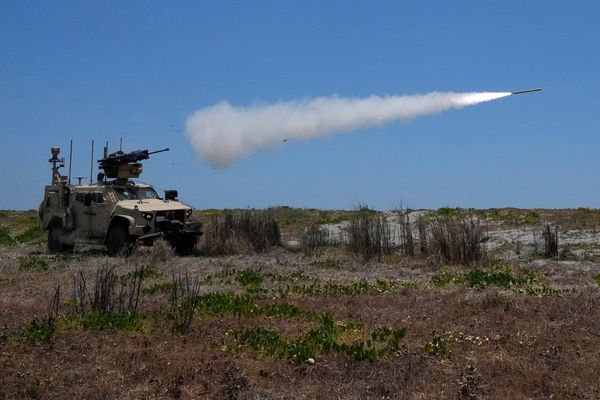
In a January 30, 2025, Barchart article on the Arabica coffee futures market, I concluded, “Cocoa experienced a parabolic rally that took the price 153.4% above the 1977 peak. Like coffee, FCOJ and cocoa rallies occurred on weather-related supply issues. If the orange juice and cocoa markets are an example, coffee futures could have significant upside potential and defy the historical pattern of corrections after eclipsing the $3 per pound level.”
The active month ICE coffee futures were trading at $3.6765 per pound on January 29, in record territory. In February, coffee futures eclipsed $4 per pound, reaching just under $4.30. Coffee futures have corrected but remain in record territory in March 2025.
The explosive rally took coffee to a record high in February 2025
ICE Arabica coffee futures rallied above the long-term technical resistance level as a hot knife goes through butter.

The continuous quarterly Arabica coffee futures chart highlights the move above the 1977 $3.3750 per pound record high in December 2024. The coffee futures continued their upward momentum, reaching a new $4.2995 high in February 2025 before correcting below the $4 level.
The cure for high prices in commodities is high prices
Coffee was the third soft commodity to reach a record high in 2024, joining cocoa and frozen concentrated orange juice futures. The three high-flying agricultural products have all corrected from their most recent highs, but all remain above the previous all-time highs.
The cure for high or low commodity prices is those prices. When prices fall to low levels, producers cut output, inventories decline, and consumers increase purchases, leading to price bottoms. When prices rise to extraordinary highs, producers eventually ramp up output, inventories increase, and consumers decrease purchases, seeking substitutes or going without the high-priced products, leading to price tops.
The odds are that coffee futures have reached a level where the high price is its worst enemy as it will encourage increased production of the Arabica beans. Successful production increases depend on the weather and lack of crop diseases over the coming months, which could keep prices elevated.
Tariffs and supply concerns continue
Tariffs imposed by the U.S. Trump administration are distorting commodity prices by creating trade barriers. Brazil is the world’s leading coffee-producing country, and other Central American countries are significant producers of the beans. Trade issues with the U.S. could artificially prop up prices even if production increases in 2025 and beyond.
Meanwhile, Mother Nature is critical as the weather across the top growing regions determines the annual crop and supplies. Moreover, crop diseases that can impact coffee beans and other soft commodities can devastate crops. Tariffs, weather, and crop issues are the critical factors for the path of least resistance of coffee prices in 2025 and over the coming years.
Technical support is at the previous record high from the 1970s
Long-term technical support for the ICE Arabica coffee futures is now at the $3.3750 per pound level, the previous 1977 all-time high that had been technical resistance and became technical support.

The daily chart illustrates short-term technical support levels at the February 26 low of $3.6630 and the December 31, 2024, low of $3.0865, which is below the long-term support level of $3.3750.
Technical resistance is at the March 5, 2025, high of $4.1855 and the February 11, 2025, record high of $4.2995 per pound.

The forward curve for the coffee futures market highlights descending prices out to late 2027, validating the sentiment that the cure for the recent all-time high and current price level is the high prices as production will increase and prices will continue to decline. However, Mother Nature, crop health, and international trade could provide roadblocks to lower prices.
No ETF or ETN products track Arabica coffee- Futures and futures options are the only way to participate
The only route for a risk position in Arabica coffee is the futures and futures options on the Intercontinental Exchange. The Exchange lists Arabica coffee futures and futures options, which are liquid products. A contract contains 37,500 pounds of beans, worth $146,250 at $3.90 per pound. The original margin of $11,451 means a market participant can control $141,750 worth of coffee with a 7.83% downpayment. The Exchange requires variation margin payments if equity drops below $10,410 per contract.
The cure for the current high coffee prices is likely the high price, but time will tell if trade issues, the weather, and crop health will support increased supplies that return prices to lower levels.







